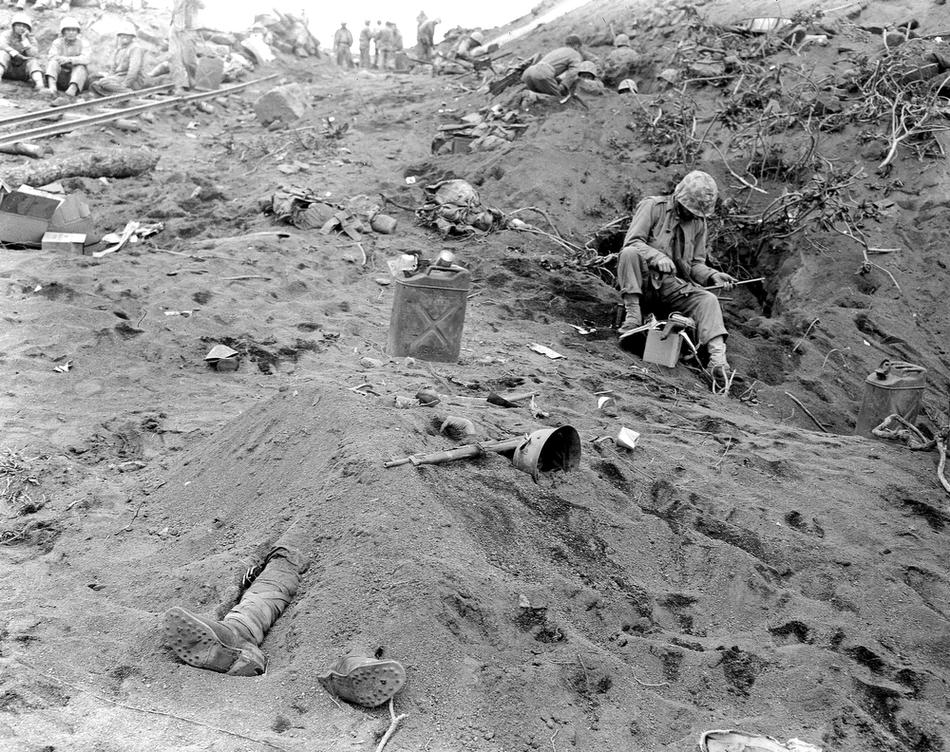
The booted feet of a dead Japanese soldier, foreground, protrude from beneath a mound of earth on Iwo Jima during the American invasion of the Japanese Volcano Island stronghold in 1945 in World War II. U.S. Marines can be seen nearby in foxholes. (AP Photo/Joe Rosenthal)
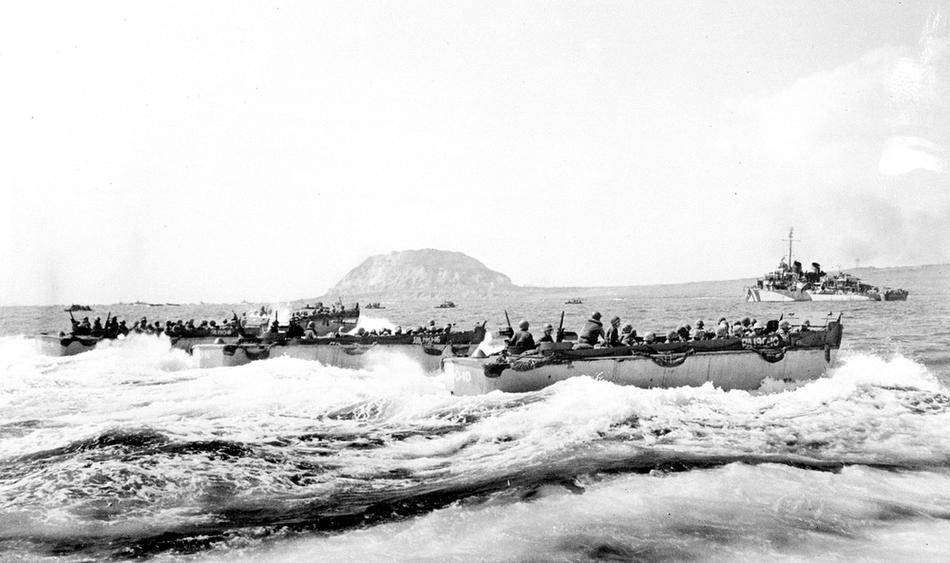
U.S. Marines aboard a landing craft head for the beaches of Iwo Jima Island, Japan, on Feb. 19, 1945 during World War II. In the background is Mount Suribachi, the extinct volcano captured by the Marines after a frontal assault. (AP Photo/Joe Rosenthal)
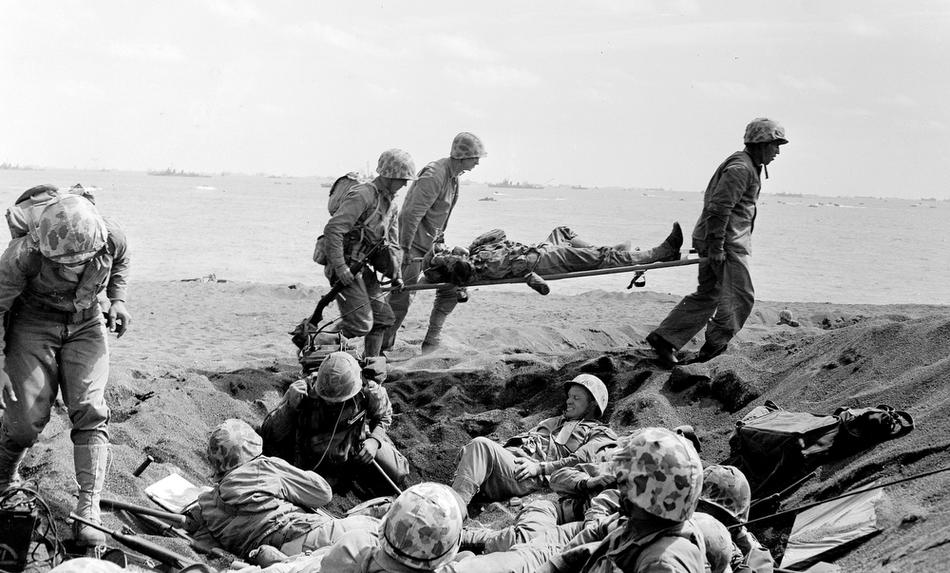
U.S. Corpsmen carry a wounded Marine on a stretcher to an evacuation boat on the beach at Iwo Jima while other Marines huddle in a foxhole during the invasion of the Japanese Volcano Island stronghold in this file photo of Feb. 25, 1945. A search team is on the island looking for a cave where the Marine combat photographer who filmed the famous World War II flag raising 62 years ago is believed to have been killed in battle nine days later, military officials said Friday, June 22, 2007. The team, from the Joint POW/MIA Accounting Command, based at Hickam Air Force Base in Hawaii, is on Iwo Jima looking for the remains of Sgt. Willam H. Genaust and "as many other American servicemen as they can find," JPAC spokesman Lt. Col. Mark Brown told The Associated Press. (AP Photo/Joe Rosenthal
U.S. Marines walk amid wreckage of Japanese planes alongside Motoyamo Airstrip No. 1 that were brought down during aerial bombing and naval shelling prior to American invasion of Iwo Jima, Japanese Volcano Island stronghold, March 1, 1945. (AP Photo/Joe Rosenthal)
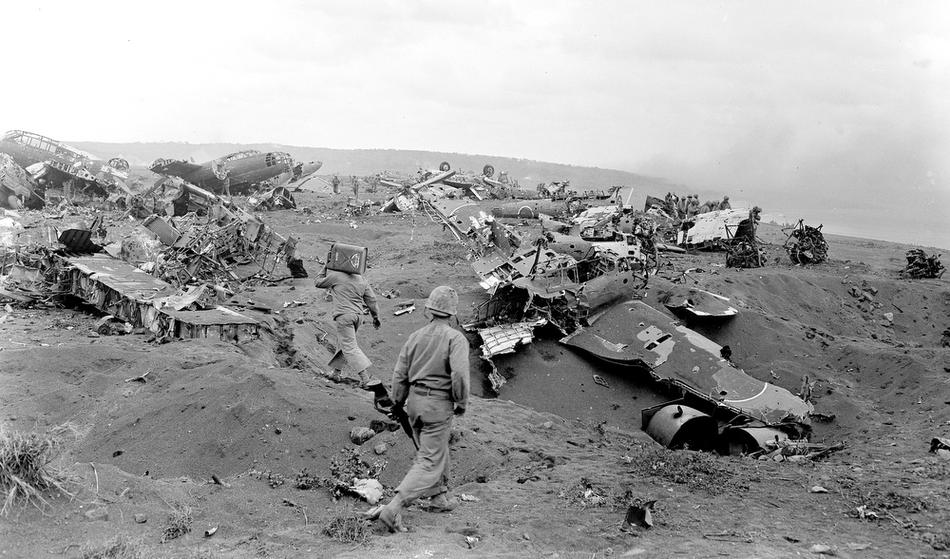
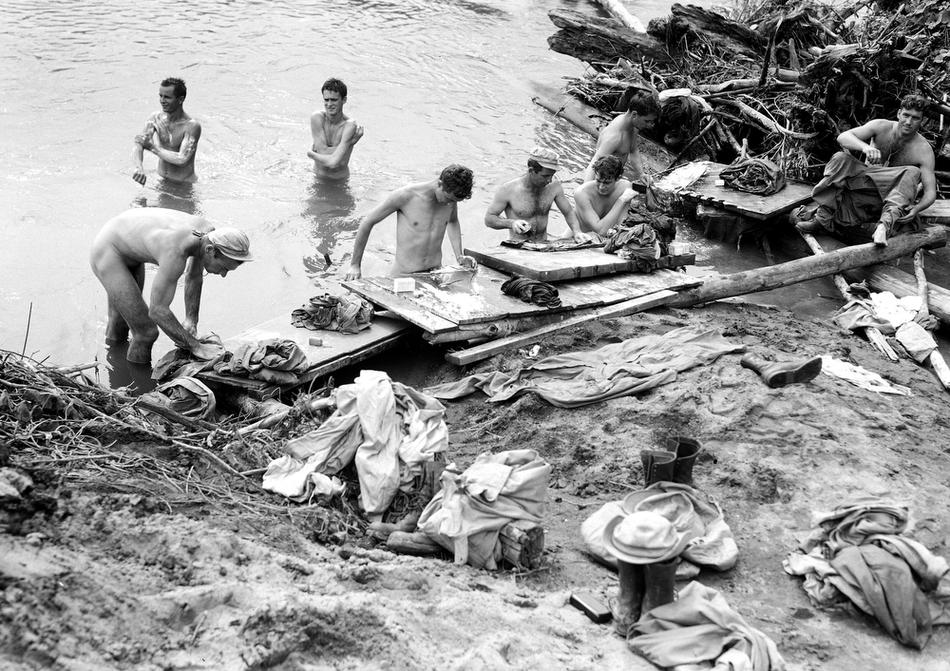
Soldiers of a parachute unit wash their bodies and clothes, New Guinea, Jul. 11, 1944. (AP Photo/Joe Rosenthal)
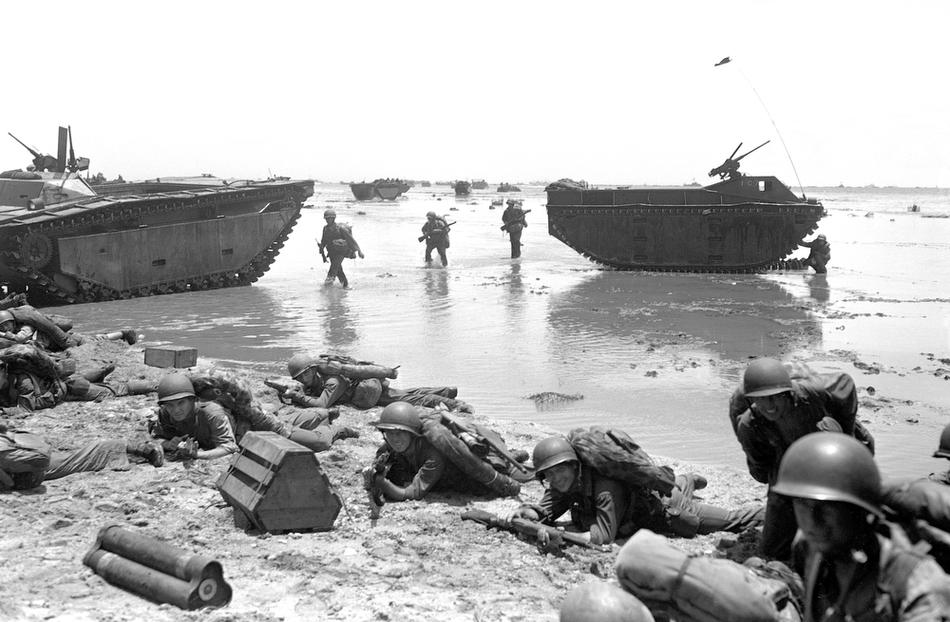
Marines land on coral reefs during U.S./Japanese warfare, Guam, Mariana Islands, Jul. 21, 1944. (AP Photo/Joe Rosenthal)
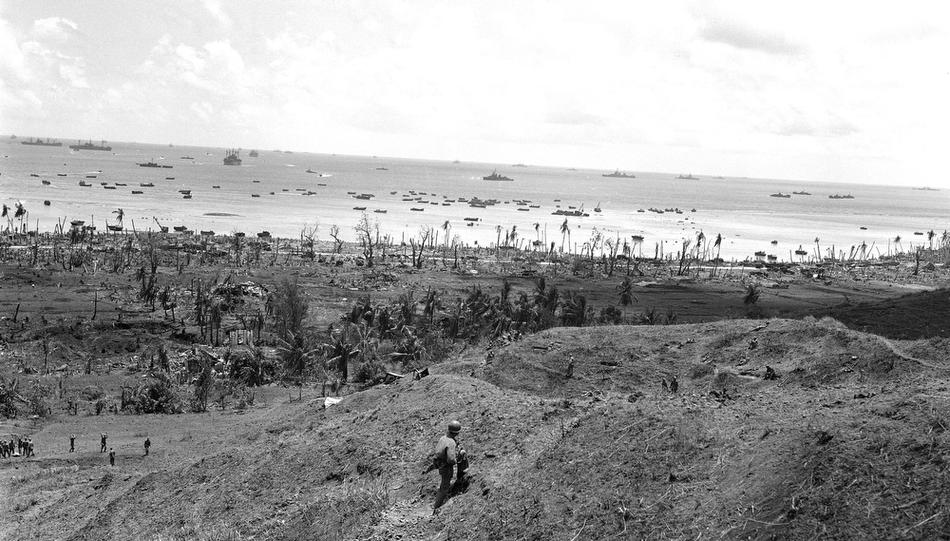
Guam in the Mariana Islands is pictured on Jul. 27, 1944, during U.S./Japanese warfare. (AP photo/Joe Rosenthal)
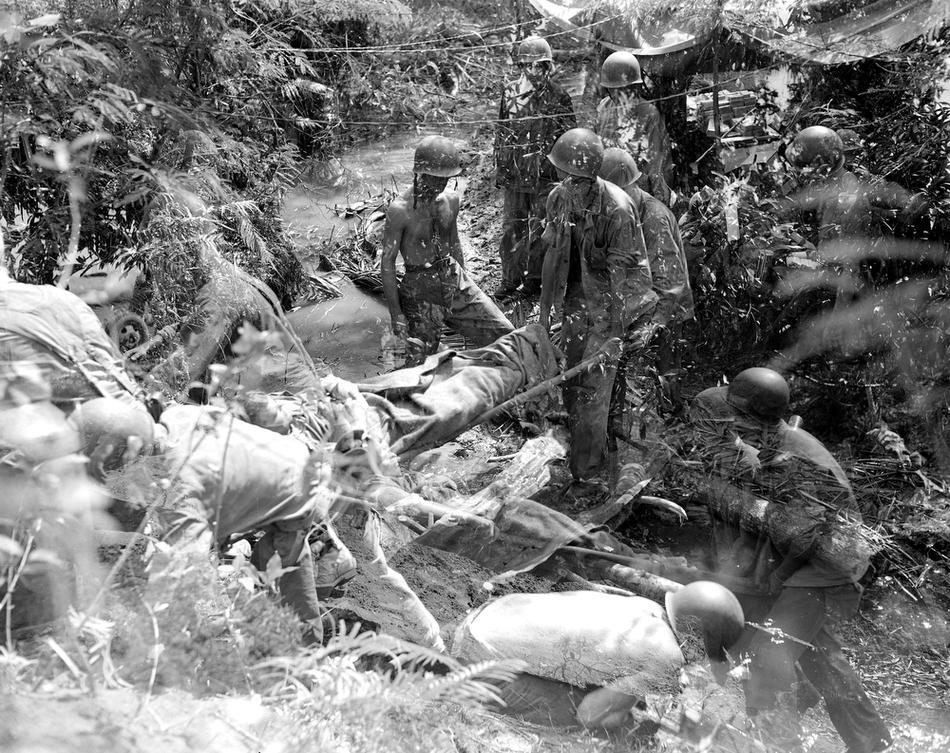
Wounded soldiers are carried on stretchers towards a beach where they will be evacuated to a hospital ship, Guam, Mariana Islands, Jul. 27, 1944. (Eds Note: Possible Double exposure.) (AP Photo/Joe Rosenthal)
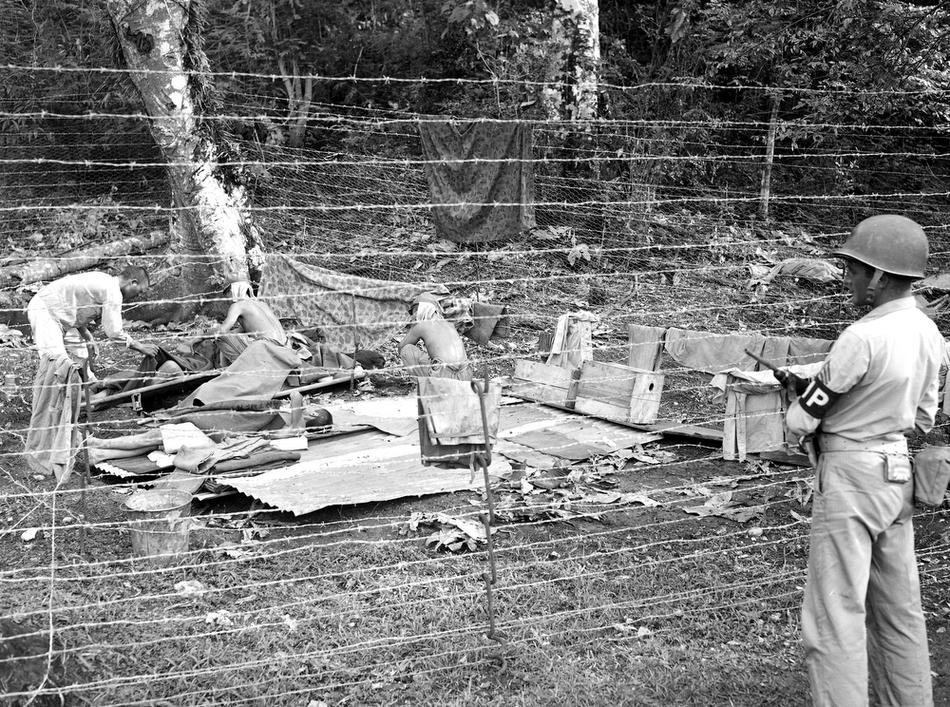
Japanese soldiers are seen imprisoned during U.S./Japanese warfare, Guam, Mariana Islands, Aug. 15, 1944. (AP Photo/Joe Rosenthal)
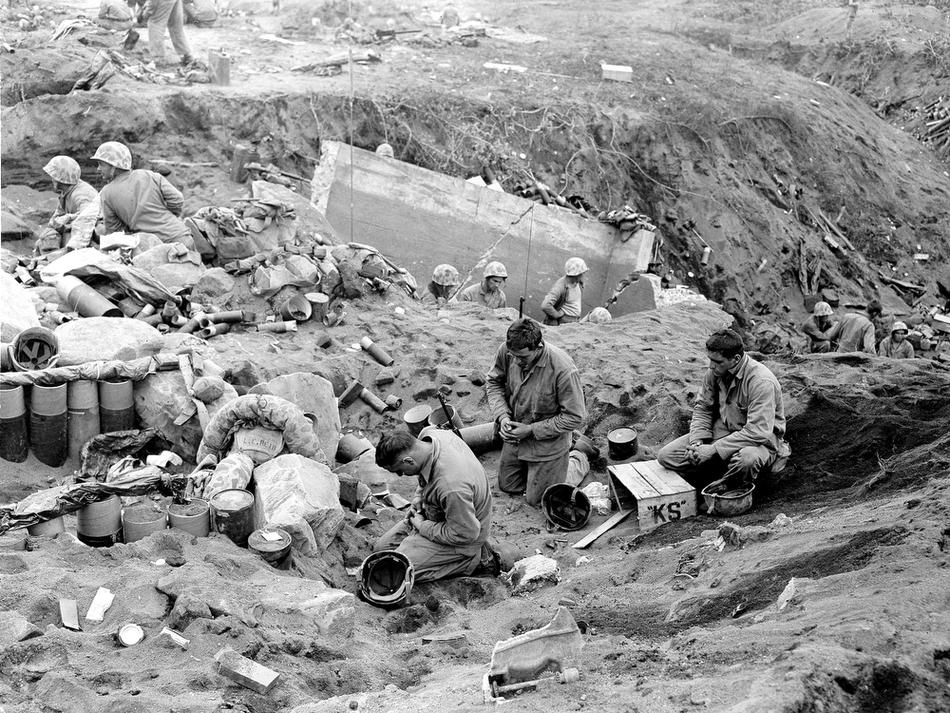
U.S. Marines kneel in prayer before they receive communion during a pause in the fighting for Motoyam Airstrip No. 1 on Iwo Jima, Volcano Island of Japan, March 1, 1945 in World War II. The soldiers, from left are , Pfc. Edmond L. Fadel, Niagara Falls, N.Y.; Pvt. Walter M. Sokowski, Syracuse, N.Y.; and Pvt. Nicholas A. Zingaro, Syracuse, N.Y. (AP Photo/Joe Rosenthal)
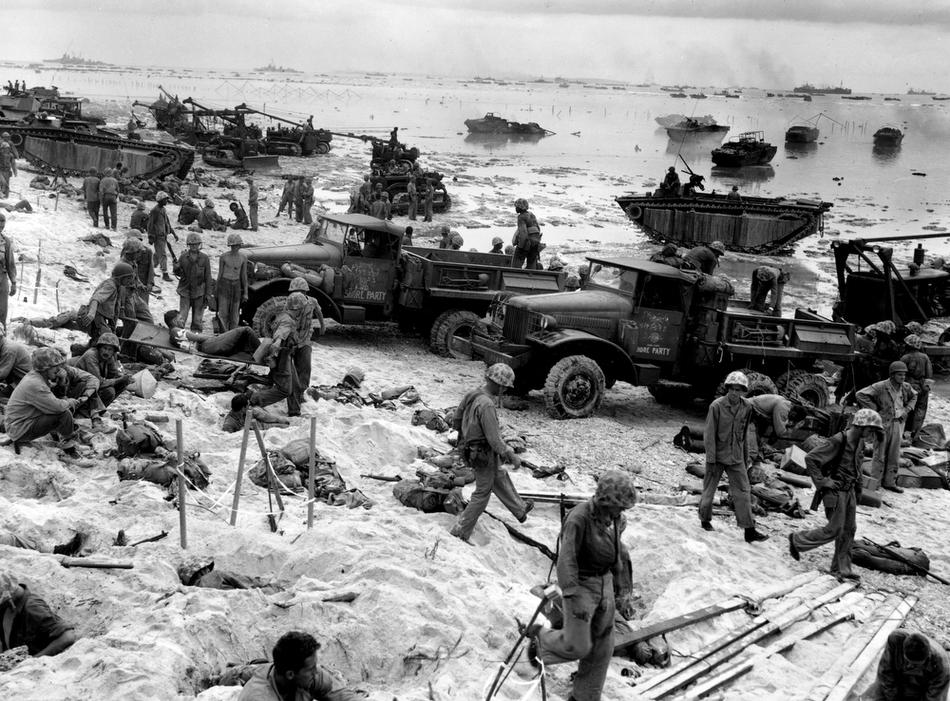
As the invasion of Peleliu gets underway, U.S. Marines unload war supplies and ammunition boxes onto the beach of the island in the Palau group, in September 1944. Note injured Marine on a stretcher at left center. (AP Photo/Joe Rosenthal)
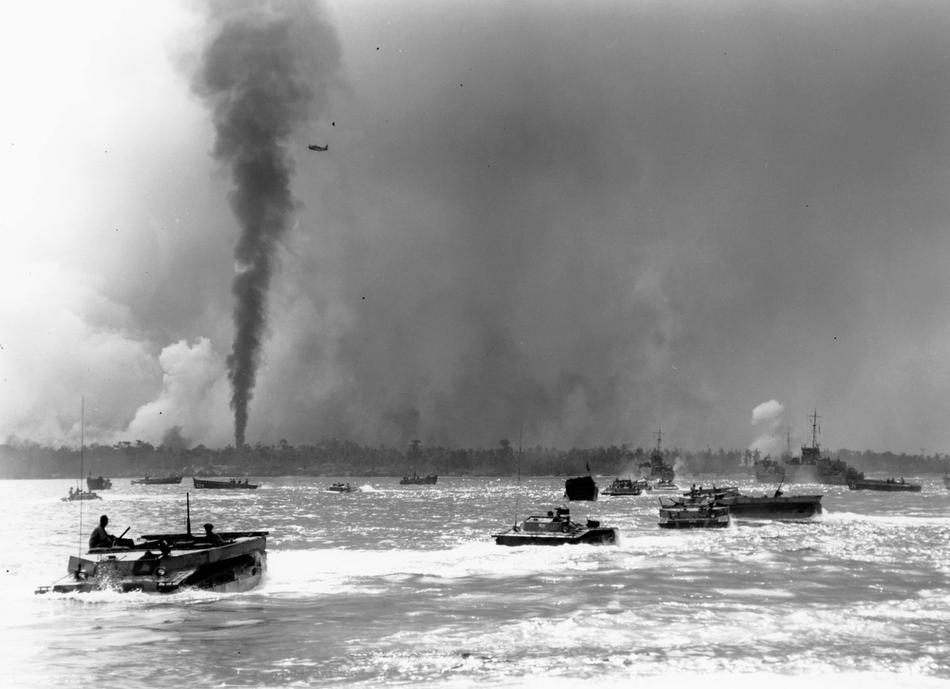
As the U.S. invasion of Peleliu gets underway, various types of landing craft approach the island in the Palau group, ferrying men and material to the beaches, on September 14, 1944. (AP Photo/Joe Rosenthal)
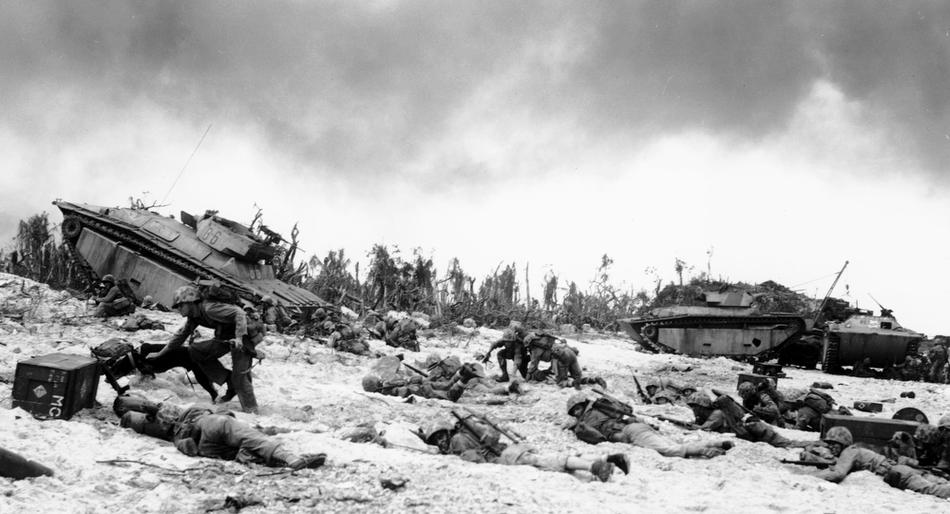
Supported by tanks, Marines of the 1st U.S. Division inch their way up on the beach of Peleliu, during the invasion of the island in the Palau group, on September 14, 1944. (AP Photo/Joe Rosenthal)
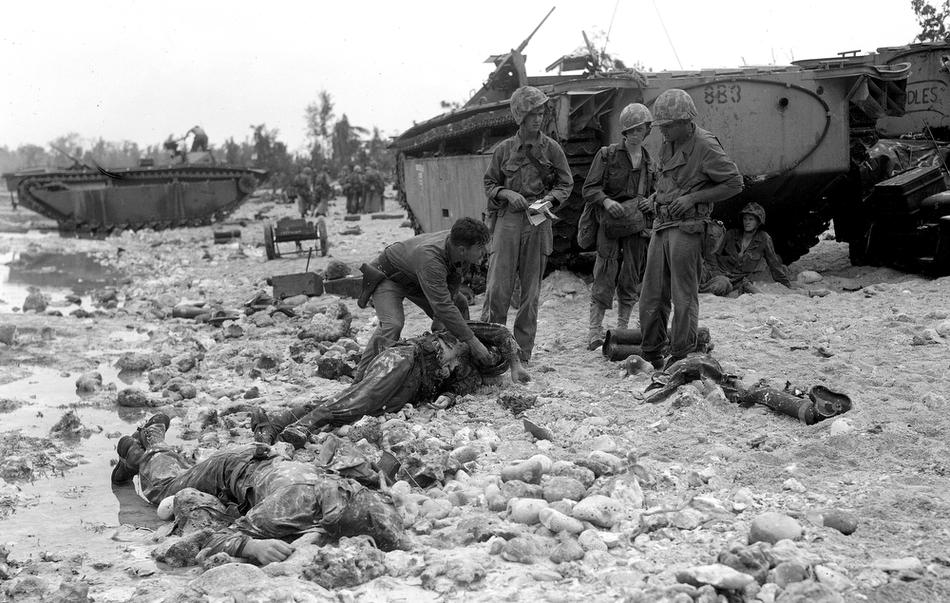
U.S. Marines of the first Marine Division stand by the corpses of two of their comrades, who were killed by Japanese soldiers on a beach on Peleliu island, Republic of Palau, Sep. 14, 1944. (AP Photo/Joe Rosenthal/Pool)
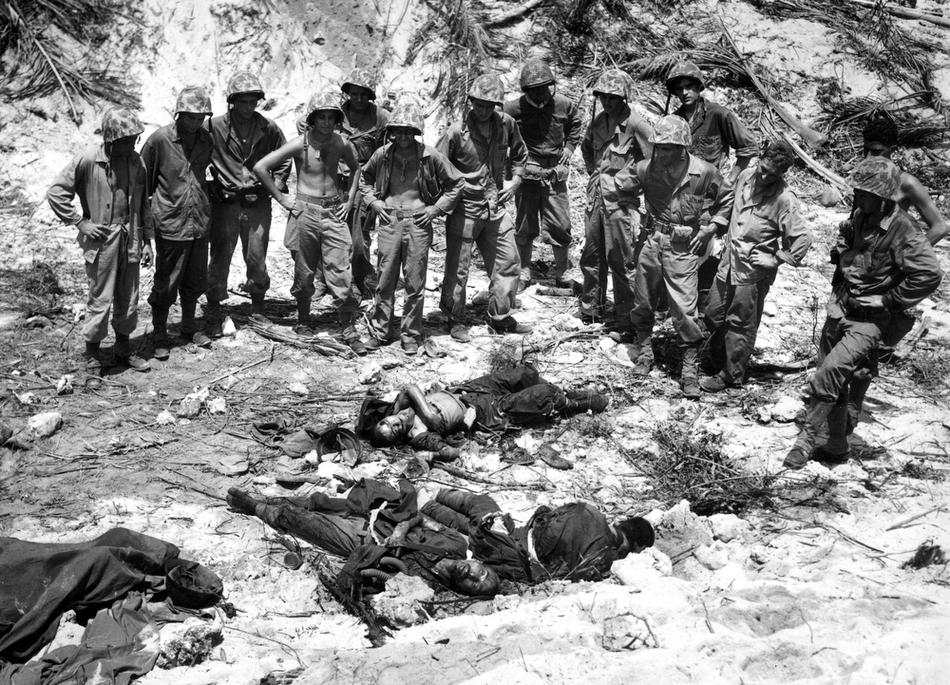
U.S. Marines inspect the bodies of three Japanese soldiers killed in the invasion at Peleliu island at the Palau group, September 16, 1944. (AP Photo/Joe Rosenthal)
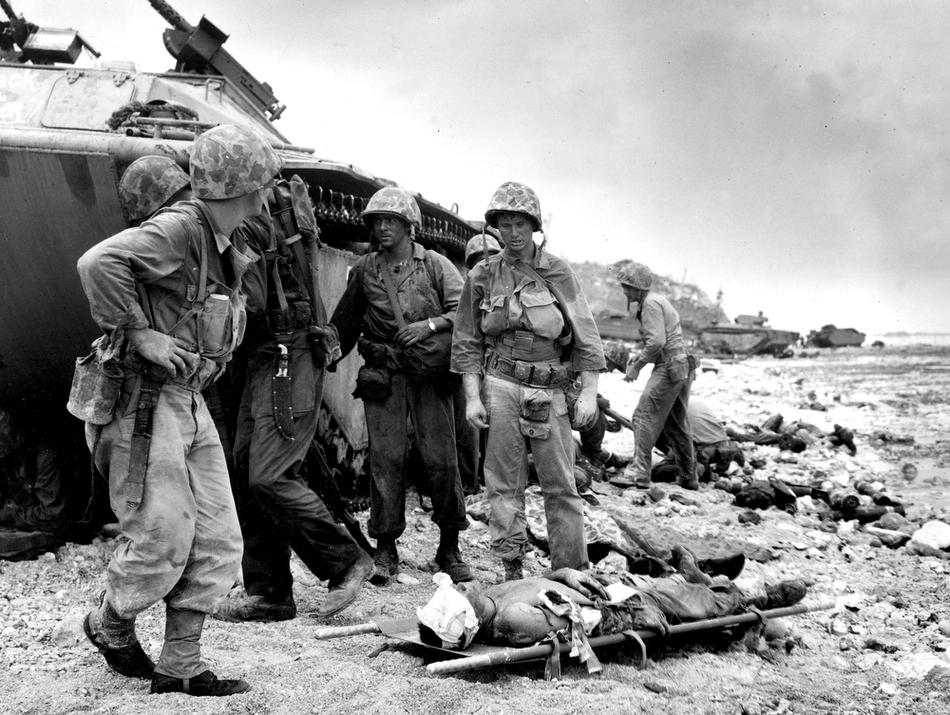
U.S. Marines stand next to the body of a comrade who fell in the early assault wave during the invasion at Peleliu in the Palau group, September 14, 1944. (AP Photo/Joe Rosenthal)
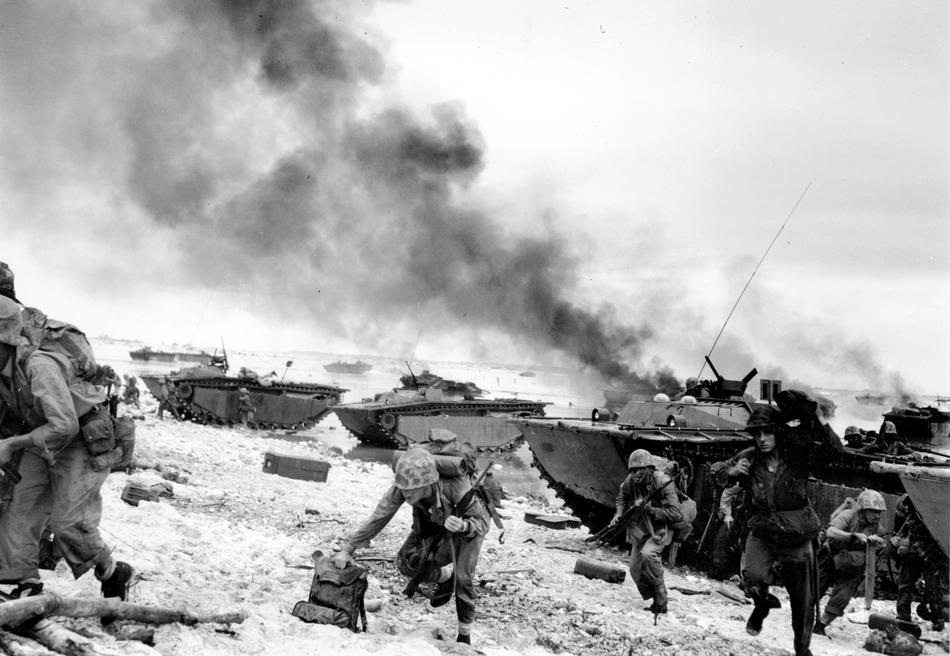
U.S. troops of the First Marine Division storm ashore from beached "Alligator" vehicles at Peleliu Island, Palau on Sept. 20, 1944 during World War II. The invasion started Sept. 14. The smoke is from a burning "Alligator." (AP Photo/Joe Rosenthal)
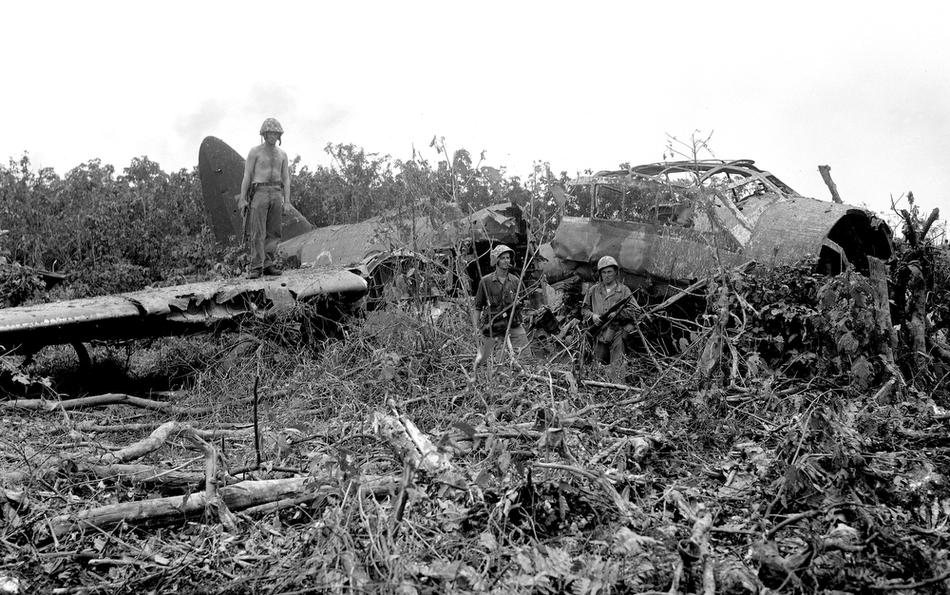
Soldiers stand by a crashed Japanese bomber on Peleliu, Republic of Palau, Sep. 22, 1944. (AP Photo/Joe Rosenthal)
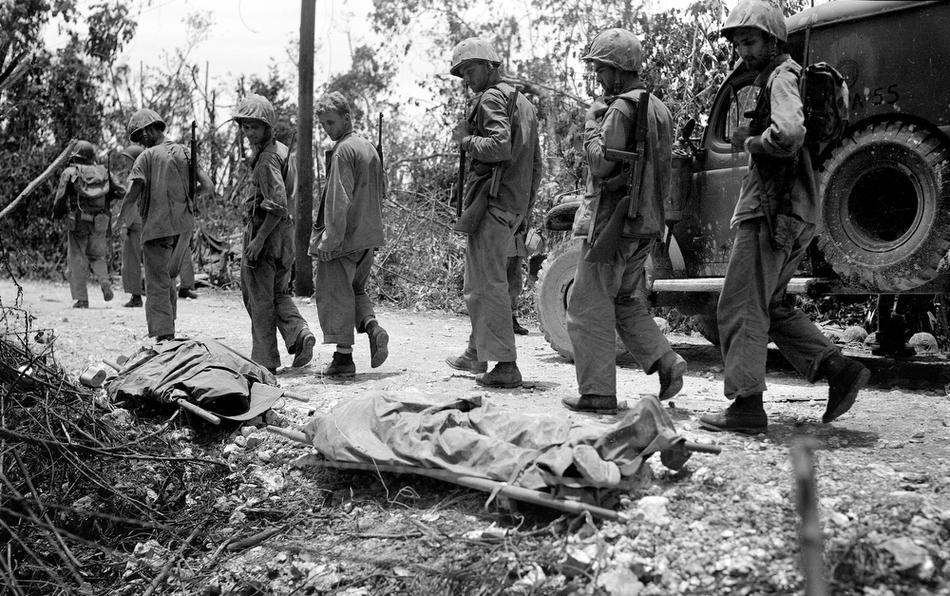
PELELIEU, Palau. (AP Photo/Joe Rosenthal)
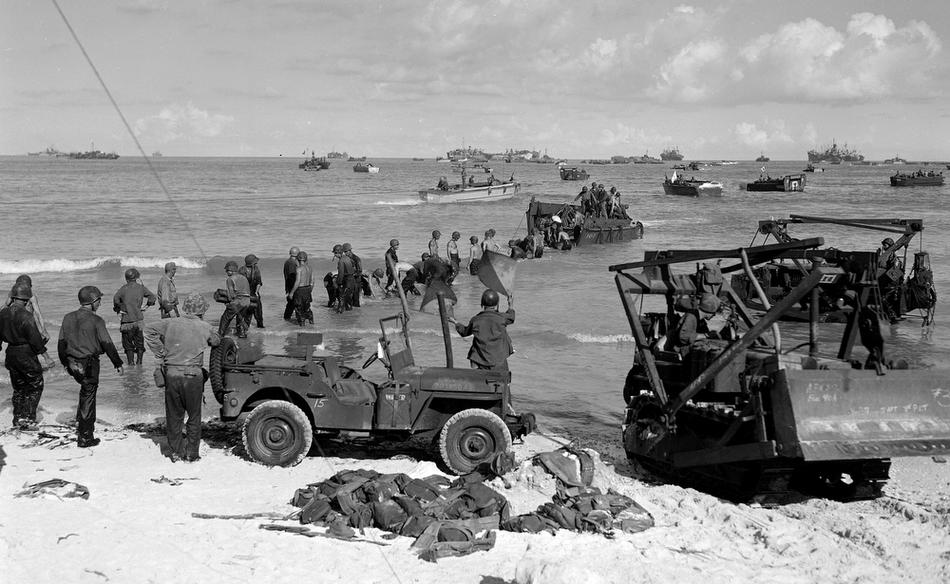
ANGAUR ISLAND, Palau. (AP Photo/Joe Rosenthal)
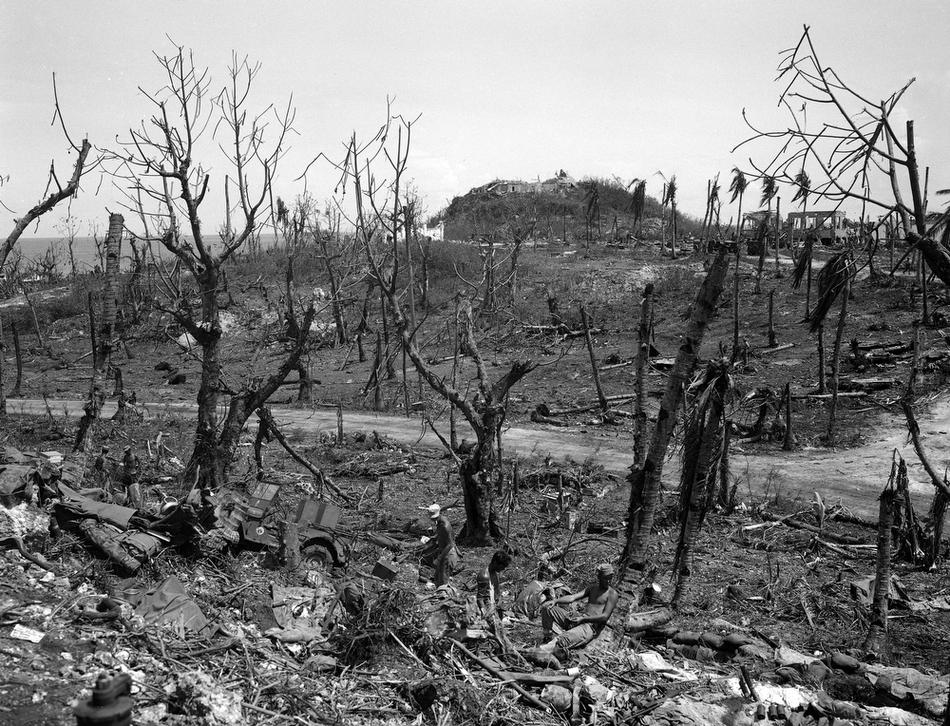
ADELUP POINT, Guam (AP Photo/Joe Rosenthal)
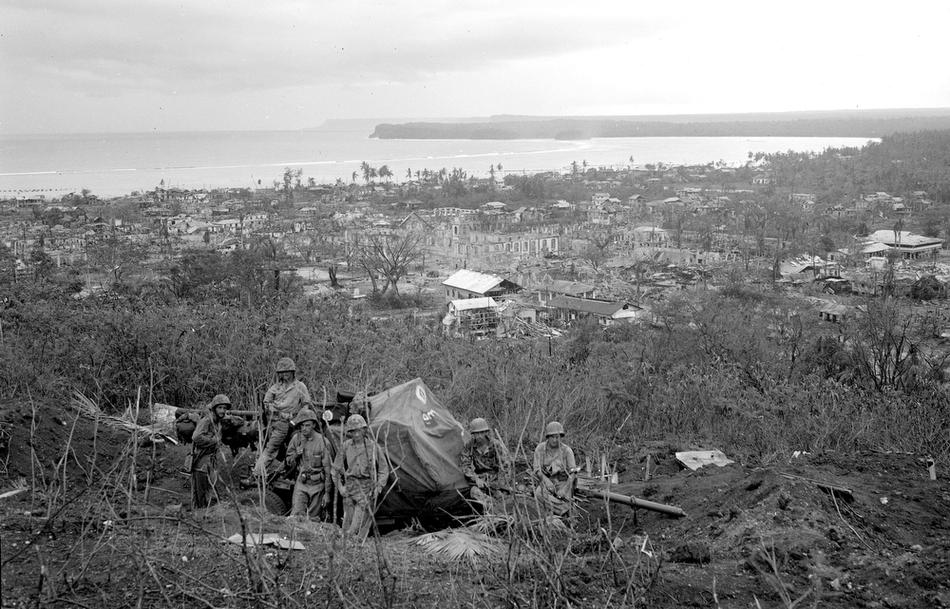
AGANA, Guam (AP Photo/Joe Rosenthal)
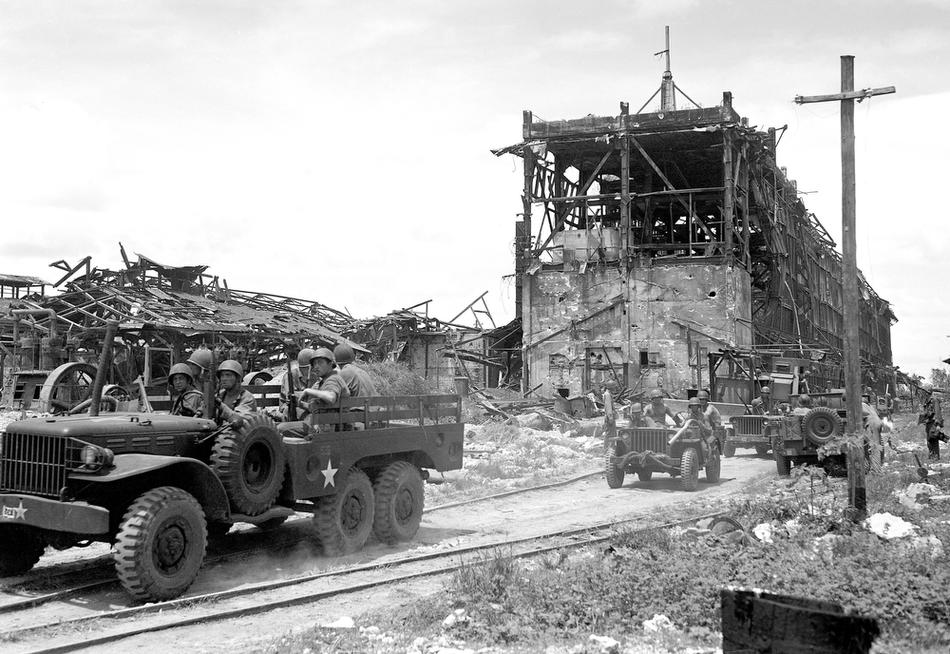
ANGAUR ISLAND, Palau. (AP Photo/Joe Rosenthal)
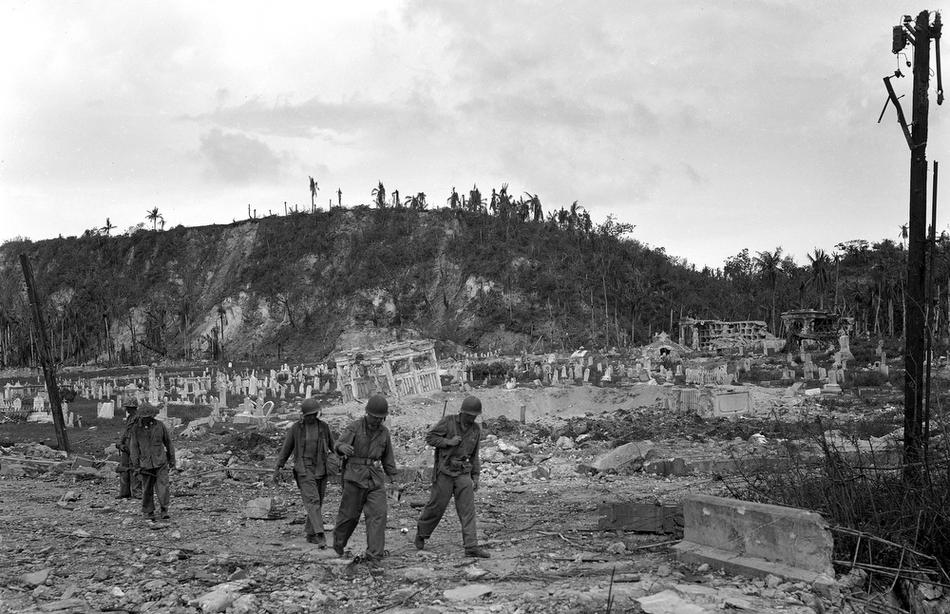
U.S. soldiers walk by a bombed out cemetery in Agana, Guam, Aug. 9, 1944. (AP Photo/Joe Rosenthal)
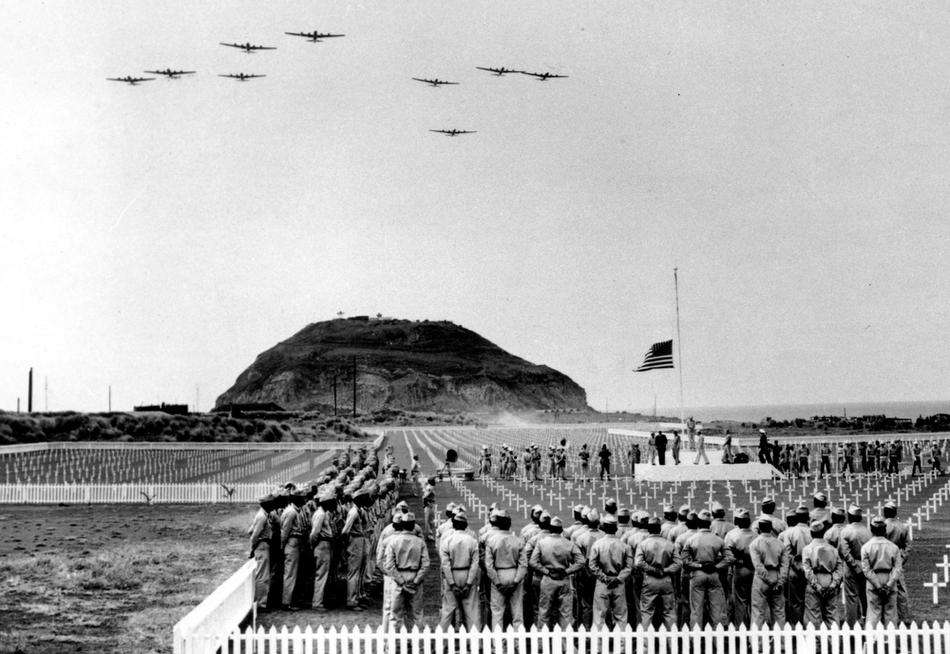
Memorial services are conducted at an Iwo Jima cemetery on Feb. 20, 1947. Four-engined military planes soar overhead and the U.S. flag is at half staff in honor of those who died in the 1945 invasion of the then Japanese held island. Mt. Suribachi is in the background. (AP Photo/Joe Rosenthal)4
Paul Marquis
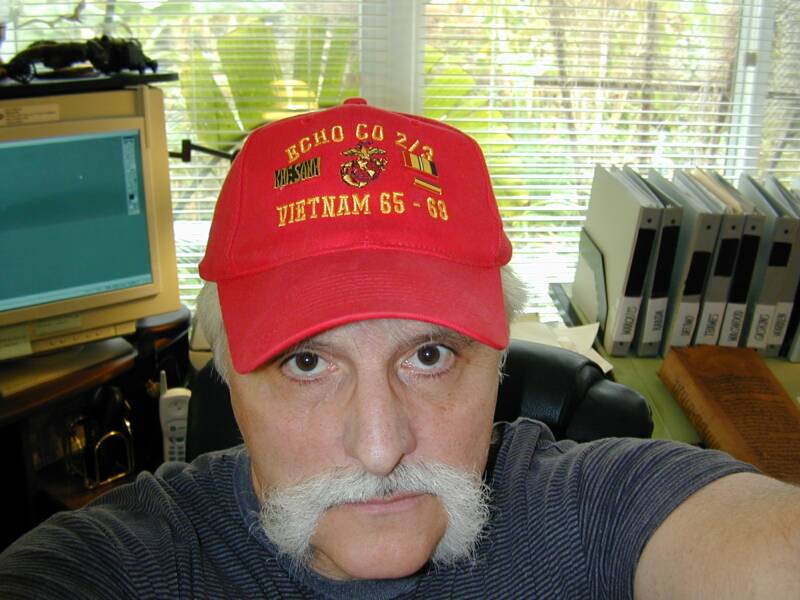
 | ||||||

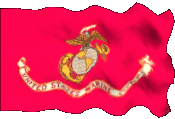
SOUND
CONTROL